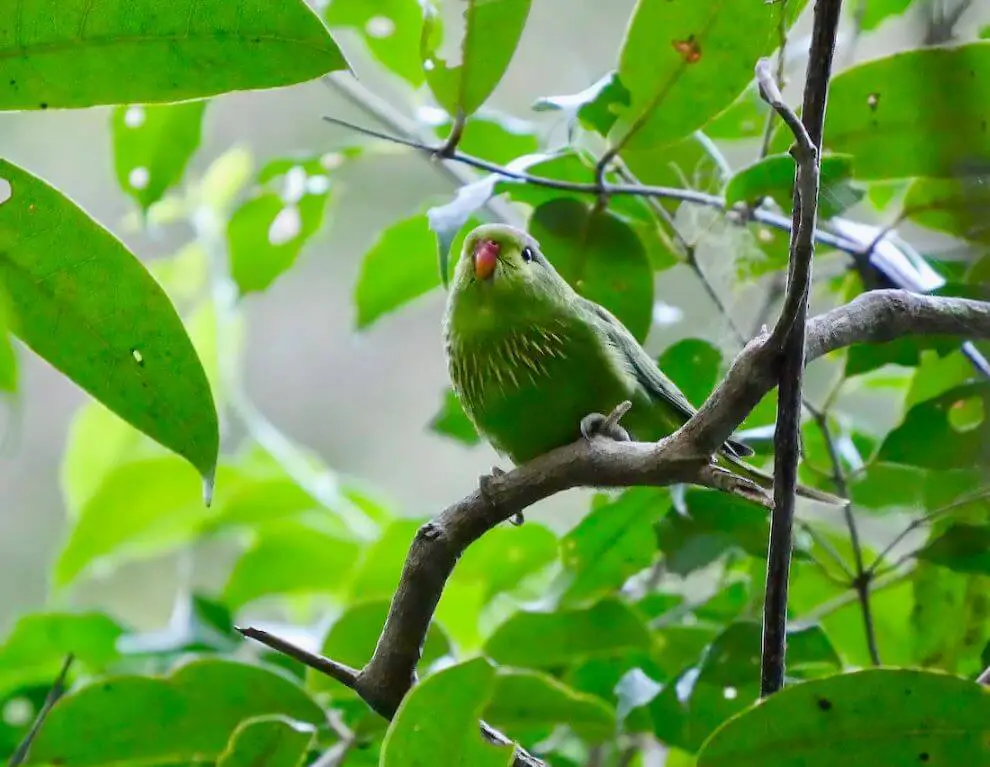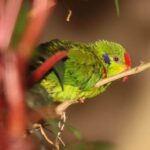
Pygmy Lorikeet 13 cm. Green above, yellowish-green below; mid- to hind crown purple with blue streaks; hindneck stained brownish; thin yellow streaks on breast;
underwing-coverts and broadband on the underside of flight-feathers red; lower back red, rump cobalt; underside of tail red basally; bill yellowish-orange; legs grey. Female Pygmy Lorikeet lacks red on the rump. Immature lacks crown and breast streaks.
Scientific name
The German AB Meyer, who described the species in 1874, dedicated it to his wife Wilhelmine Meyer, hence the scientific name Wilhemina. The Parrot has also been called Wilhelmina’s lorikeet in Swedish.
Description
The average length is 13 cm, weight is 20 g. This is the smallest of the representatives of its kind. Color details of males and females, juveniles and adults, differ.
Species
The Pygmy Lorikeet species is traditionally placed in the genus Charmosyna. Genetic studies show, however, that the species in the genus are not closest to each other. Dwarf lorikeet has therefore been raised to its own genus Charminetta
Systematics History
Monotypic.
Subspecies
Monotypic.
Distribution
Highlands of W, C & E New Guinea from Arfak Mts (in Vogelkop Peninsula) E to the Huon Peninsula and Owen Stanley Range.
Habitat
Canopy of mountain forest and edges, moss forest, adjacent savanna woodlands, generally 1000–2200 m although often lower.
Movement
Appears to show some nomadism in response to the flowering of certain trees, and regular appearance in the period May–Nov occurs at 220 m near Port Moresby. In one upland area, only recorded at peak flowering times.
Diet and Foraging
Pollen and nectar; recorded trees include eucalypts and Castanopsis oaks, and inflorescences of Elaeocarpus.
Sounds and Vocal Behavior
Pygmy Lorikeet is Not very vocal. Mainly utters faint high-pitched calls such as “tss tss tsee”. Flight call was high-pitched and hoarse.
Conservation Status
Not globally threatened. CITES II. Generally uncommon but easily overlooked; usually singly or in pairs.




















